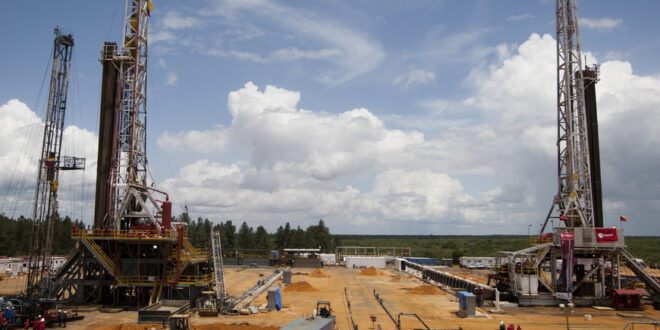In 1943 President Franklin Roosevelt declared that “the defense of Saudi Arabia is vital to the defense of the United States.” The reason: Ten years earlier the desert kingdom had granted a concession to Standard Oil of California to explore for oil. It turned out there was some, in fact, a lot.
Roosevelt visited with the kingdom’s monarch, King Ibn Saud, early in 1945 to further cement relations between the two countries, paving the way for a mutual defense treaty in 1951. The idea was to provide protection for Saudi Arabia in exchange for access to the country’s oil.
Fast forward to last week. The Saudi Ministry of Energy ordered the government-owned oil company, Saudi Aramco, not to exceed its current so-called Maximum Sustainable Capacity of 12 million barrels per day (mbpd) of oil production. In other words, stop any expansion plans.
Petroleum geologist and consultant Art Berman cut through all the speculation about the reason behind this move by pointing out that the energy ministry was only directing Aramco to comply with the law.
This latest reminder that Saudi Arabia is no longer a wholly-owned gas station of the United States has been hard for the U.S. government to absorb. All the way back in 2008, then King Abdullah said he wanted to save some of the kingdom’s oil for future generations, echoing the country’s energy minister who suggested that 12.5 mbpd would be Saudi Arabia’s limit. Few people noticed at the time.
In fact, as late as 2011 the U.S. Energy Information Administration was predicting what can only be characterized as fantasy oil production numbers of 15.4 mbpd for Saudi Arabia in 2035 given the kingdom’s pronouncements to the contrary.
Even with the ramp-up of U.S. domestic production over the last decade, what happens to Saudi oil production and exports matters deeply to the United States and the world because of Saudi Arabia’s preponderant share of both—11.3 percent of world oil production as of October 2023 (for crude oil including lease condensates which is the definition of oil) and 15.7 percent of exports as of 2020. Changes in Saudi production can have disproportionate effects on the world oil price and supply.
One reason behind Saudi Arabia’s desire to limit oil production may be that domestic consumption has been rising smartly since the beginning of the millennium. While the kingdom relies almost exclusively on petroleum products for export revenues, it also has a growing population that might get restive if future oil supplies decline because of overtaxed and exhausted fields.
Saudi Arabia’s dilemma is faced by many oil exporters who may want to consider whether setting oil production to full throttle might cause a decline in production flows much sooner than anticipated due to depletion. These exporters in many cases also have growing populations that will demand a greater share of oil crimping exports. This has already caused exports to decline, sometimes rapidly, in a number of oil producing nations. Dallas petroleum geologist Jeffrey Brown outlined this problem long ago in his Export Land Model which has been confirmed over time.
It really should come as no surprise that despite the long running security and economic ties between the United States and Saudi Arabia, Saudi Arabia will be limiting its oil production in the years and perhaps decades ahead. The kingdom has been signaling this for a long time. What’s harder to fathom is why the United States and the world keep getting surprised by the intersection of geology and politics that is driving our energy future.

 Iran Energy News Oil, Gas, Petrochemical and Energy Field Specialized Channel
Iran Energy News Oil, Gas, Petrochemical and Energy Field Specialized Channel



